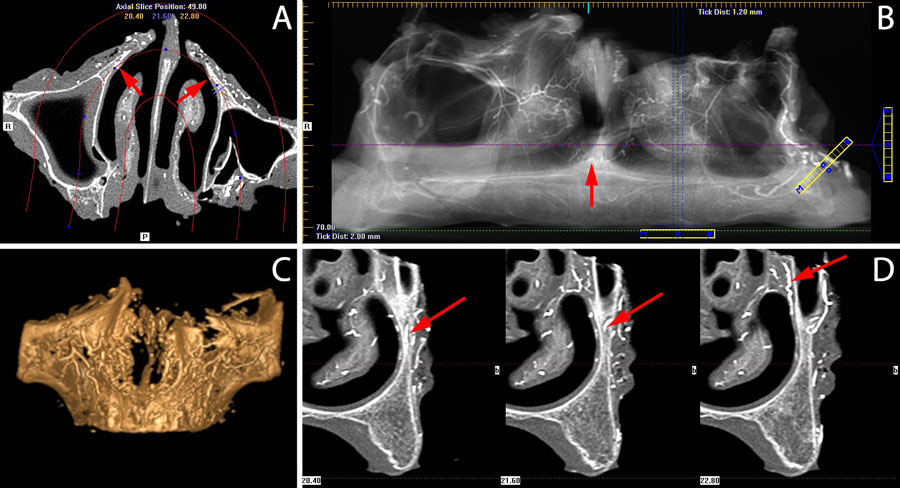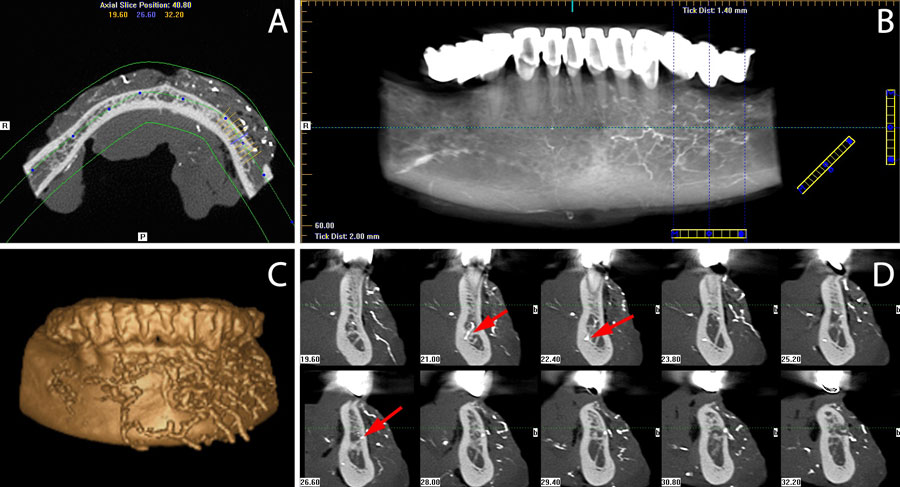2011 - 10th Meeting - IHCTAS
This page contains exclusive content for the member of the following sections: TTS, IHCTAS. Log in to view.
Posters
2.6 - INTRAOSSEOUS TERRITORY OF THE FACIAL ARTERY IN THE MAXILLA AND ANTERIOR MANDIBLE
Presenter: Maurice, Mommaerts, Bruges, Belgium
Authors: Gyongyver Molnar, Mark Plachtovics, Gabor Baksa, Lajos Patonay, Maurice Mommaerts
INTRAOSSEOUS TERRITORY OF THE FACIAL ARTERY IN THE MAXILLA AND ANTERIOR MANDIBLE
Gyongyver Molnar1, Mark Plachtovics2, Gabor Baksa1, Lajos Patonay1, Maurice Mommaerts3.
1Department of Anatomy Histology and Embryology, Semmelweis University, Budapest, Hungary; 2Kreativ Dental, Budapest, Hungay; 3Division of Maxillo-Facial Surgery, Department of Surgery and Diagnosis, GH St. John, Bruges, Belgium.
Aim: The aim of this anatomical study was to define the intraosseous vascular territory of the facial artery. The clinical issue is whether ipsilateral facial artery anastomosis will guarantee blood supply to the ipsi- and contralateral mandibular symphyses and maxillae in allotransplantation.
Material and methods: Of 10 human cadaveric heads, the left facial artery was injected with a positive contrast agent. The maxillae and mandibular symphyses were investigated with cone-beam computed tomography (CBCT).
Results: Each ipsilateral maxilla and mandibular bone segment showed contrast medium in the intraosseous vessels. In 50% of cases, this was also the case on the contralateral side of the maxilla and anterior mandible.
Conclusions: The maxillae and the mandibular symphyses receive ipsilateral blood supply from the facial artery and, in 50% of cases, also from the contralateral facial artery. Internal maxillary artery anastomosis is not required for a vascularized maxillary bone flap. Additionally, involvement of the submental artery is not needed for a mandibular symphyseal bone flap.


Important Disclaimer
By viewing the material on this site you understand and accept that:
- The opinions and statements expressed on this site reflect the views of the author or authors and do not necessarily reflect those of The Transplantation Society and/or its Sections.
- The hosting of material on The Transplantation Society site does not signify endorsement of this material by The Transplantation Society and/or its Sections.
- The material is solely for educational purposes for qualified health care professionals.
- The Transplantation Society and/or its Sections are not liable for any decision made or action taken based on the information contained in the material on this site.
- The information cannot be used as a substitute for professional care.
- The information does not represent a standard of care.
- No physician-patient relationship is being established.
Contact
Address
The Transplantation Society
International Headquarters
740 Notre-Dame Ouest
Suite 1245
Montréal, QC, H3C 3X6
Canada
Используйте Вавада казино для игры с бонусом — активируйте промокод и начните выигрывать уже сегодня!
